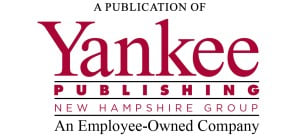The opportunity in Qualified Opportunity Funds
They offer significant tax benefits and are more flexible than you might think
Contrary to what the name implies, a Qualified Opportunity Fund, or QOF, isn’t like a traditional investment fund and doesn’t have to be a “fund” at all. In fact, it can even be an operating company.
In 2017, the federal Tax Cuts and Jobs Act introduced QOFs to incentivize investment in certain designated distressed communities, referred to as Qualified Opportunity Zones, or QOZs. Investors in QOFs are entitled to significant preferential tax benefits.
Any entity treated as a partnership or corporation for federal income tax purposes can qualify as a QOF so long as 90 percent of its property is QOZ property. “QOZ property” refers not only to interests in QOZ businesses but also to certain tangible property used within a QOZ by a qualifying business. That means investors can benefit from preferential tax treatment by investing in managed investment funds, which themselves invest in QOZ businesses, or by investing directly in qualifying operating entities.
The tax benefits available to those who invest in QOFs are likely to make QOF investments an attractive option for those in a position to recognize capital gains before Jan. 1, 2027.
Specifically, a taxpayer can defer any amount of capital gain to the extent it is reinvested in one or more QOFs within the 180-day period beginning on the date the capital gain property is sold. The taxpayer’s recognition of capital gain will be deferred until either the taxpayer disposes of the QOF interest or Dec. 31, 2026, whichever occurs first.
In addition, taxpayers who act quickly may be eligible to permanently exclude a portion of the originally deferred capital gain. Those who make qualified investments in QOFs before the ends of 2019 and 2022 and meet certain holding requirements will be entitled to permanently exclude 15 percent and 10 percent, respectively, of the capital gain originally deferred.
And any taxpayer who holds a QOF interest for more than 10 years may elect a step-up in basis to its fair market value at the time of disposition. A taxpayer who qualifies for this step-up will realize gain to the extent the value of her QOF interest has appreciated without recognizing any gain for federal income tax purposes.
Here’s an example of an investment in a QOF that is not itself a fund and the related tax benefits:
In February 2019, Fred sells his stock in XYZ Company, which he has held for more than a year, for cash. In June, Wilma forms a limited liability company to operate a gym within a designated QOZ. The LLC meets all of the QOF requirements. Fred then invests his XYZ stock capital gain in Wilma’s LLC and timely elects to defer the capital gain. Because Fred invested his capital gain in the LLC, a QOF, within 180 days of the date on which he sold the stock, he is entitled to elect to defer recognition of the gain.
If Fred maintains his interest in the LLC until June 2024, he will be entitled to exclude 10 percent of his original capital gain when he ultimately recognizes his deferred capital gain. Similarly, if Fred maintains his interest until June 2026, he can exclude an additional 5 percent of his original capital gain.
If Fred maintains his interest in the LLC until at least June 2029, he will be entitled to exclude from income all gain attributable to the increase in value of his interest in the LLC at the time he disposes of it. For example, if, in 2019, Fred had invested $10 of capital gain into the LLC and, in 2029, sells his LLC interest for $100, then Fred can elect to exclude that $90 of gain from his taxable income.
Not only are QOFs positioned to benefit struggling communities, they also offer unique tax benefits. In addition, there are many creative ways taxpayers can invest in QOFs. Taxpayers can invest in large, managed QOFs or establish their own QOFs, either as investment vehicles or operating entities. On top of that, there are very few limitations on the type of business in which a QOF operating entity can engage, though the notable exclusions include golf courses, country clubs, massage parlors, hot tub facilities, suntan facilities, facilities used for gambling and any store principally engaged in the sale of alcoholic beverages for consumption off premises.
Interested investors must make a timely investment of their capital gain by Dec. 31, 2019, to take full advantage of all of the benefits described. Timely investment of capital gains made after Dec. 31, 2019, and before Dec. 31, 2026, can still benefit fully from the 10-year holding period exclusion, but deferral of the original capital gain will be limited.
Kolbie McCabe, an associate at Sheehan Phinney is a corporate attorney. Peter Beach, a shareholder at the firm, focuses his practice on tax matters.










